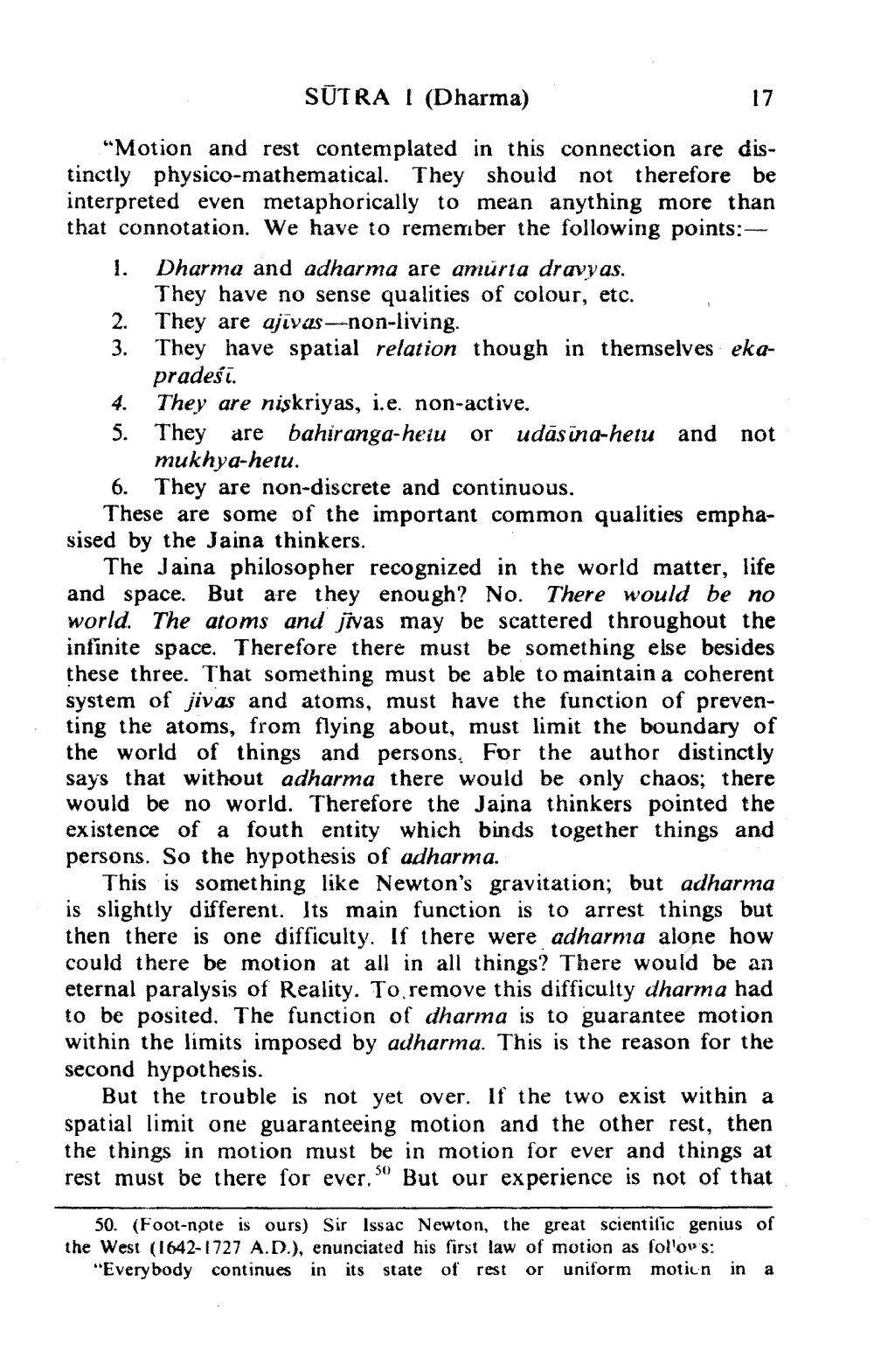________________
SŪTRA I (Dharma)
17
“Motion and rest contemplated in this connection are distinctly physico-mathematical. They should not therefore be interpreted even metaphorically to mean anything more than that connotation. We have to remenı ber the following points:
1. Dharma and adharma are amurta dravyas.
They have no sense qualities of colour, etc. 2. They are ajīvas--non-living. 3. They have spatial relation though in themselves eka
pradesi. 4. They are niskriyas, i.e. non-active. 5. They are bahiranga-heiu or udāsūna-hetu and not
mukhya-hetu. 6. They are non-discrete and continuous.
These are some of the important common qualities emphasised by the Jaina thinkers.
The Jaina philosopher recognized in the world matter, life and space. But are they enough? No. There would be no world. The atoms and jivas may be scattered throughout the infinite space. Therefore there must be something else besides these three. That something must be able to maintain a coherent system of jivas and atoms, must have the function of preventing the atoms, from flying about, must limit the boundary of the world of things and persons. For the author distinctly says that without adharma there would be only chaos; there would be no world. Therefore the Jaina thinkers pointed the existence of a fouth entity which binds together things and persons. So the hypothesis of adharma.
This is something like Newton's gravitation, but adharma is slightly different. Its main function is to arrest things but then there is one difficulty. If there were adharnia alone how could there be motion at all in all things? There would be an eternal paralysis of Reality. To remove this difficulty dharma had to be posited. The function of dharma is to guarantee motion within the limits imposed by adharma. This is the reason for the second hypothesis.
But the trouble is not yet over. If the two exist within a spatial limit one guaranteeing motion and the other rest, the things in motion must be in motion for ever and things at rest must be there for ever. 50 But our experience is not of that
50. (Foot-note is ours) Sir Issac Newton, the great scientific genius of the West (1642-1727 A.D.), enunciated his first law of motion as follows:
"Everybody continues in its state of rest or uniform motion in a




